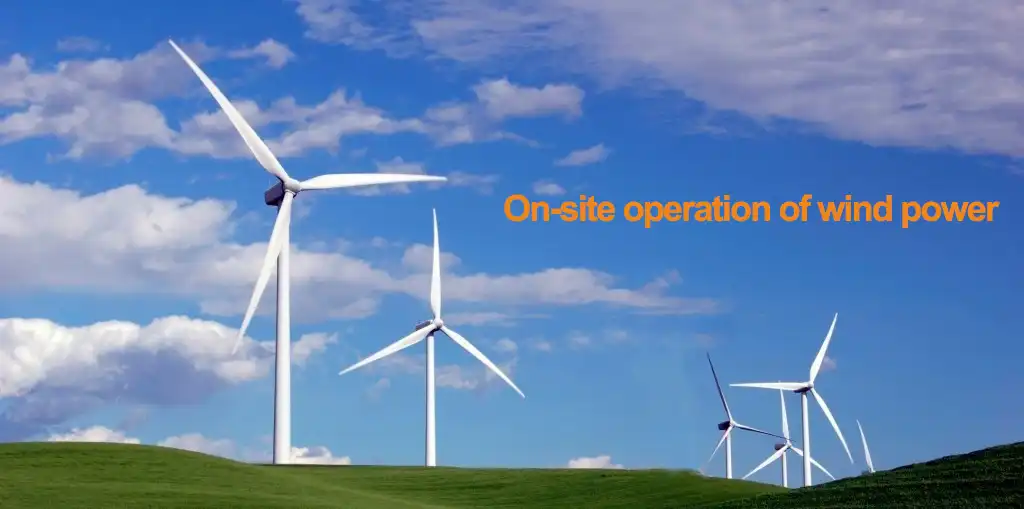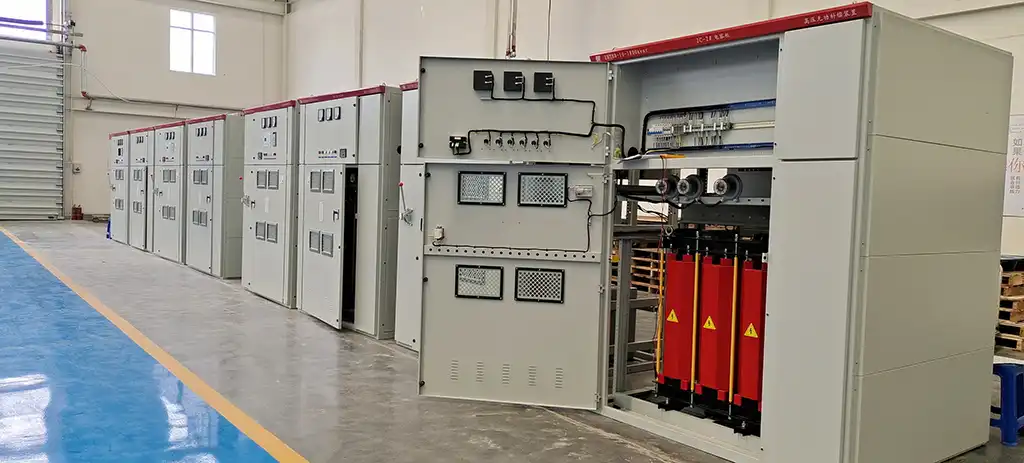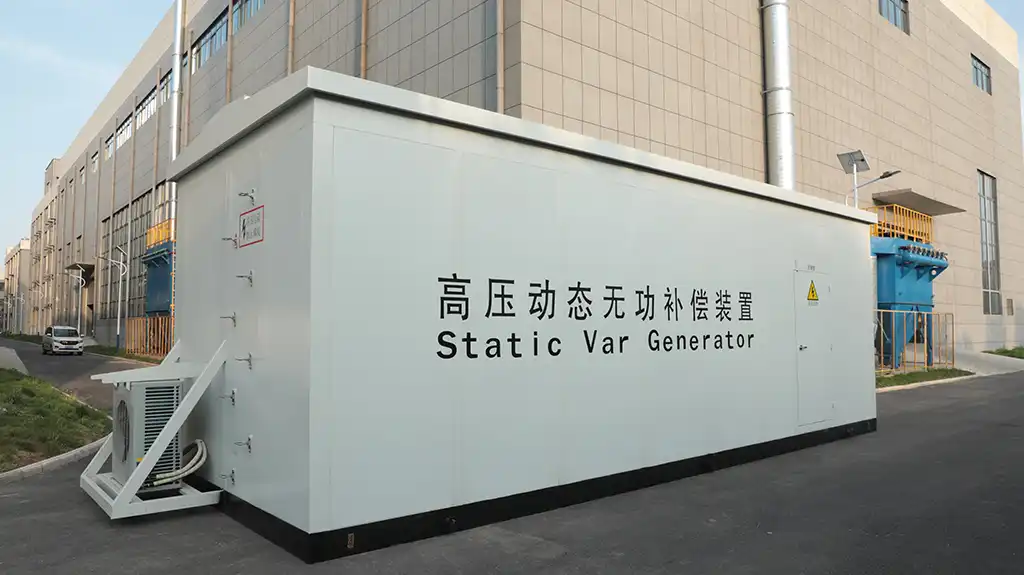Wind power: why do reactive power compensation?
Wind power background introduction
Wind energy has random and intermittent characteristics. Large-scale wind farms are generally located in remote locations and are in the weak links of the power grid. With the continuous increase of wind power grid-connected capacity, grid voltage instability and line loss increase caused by wind power grid connections increasingly prominent. Power quality has a significant impact on grid stability, safe operation of power equipment, and industrial and agricultural production, among which reactive power is one of the important factors affecting power quality. Wind power reactive power compensation is of great significance to improve grid-connected power quality, reduce grid loss, and enhance grid operation stability and security.

Analysis of Wind Power Operation Characteristics
The speed and direction of the wind change randomly and intermittently, and the wind speed and wind direction in different locations have obvious differences. the electric energy output of the wind turbine also changes randomly. The short-period variation of wind power output is significant, and the output of wind turbines in the same wind farm varies asynchronously. Therefore, wind power generation has the characteristics of randomness (unstable) and uncontrollable.
Due to randomness and uncontrollability, large-scale grid connection of wind power will cause problems such as bus voltage over-limit, grid voltage fluctuation and flicker to the power system. For example, when a wind farm is out of operation, the system may suffer a voltage collapse due to the sudden loss of a large amount of reactive power injection; the instantaneous reactive power surplus caused by the shutdown cannot be digested in time, which may lead to system voltage instability. During normal operation, changes in wind power generation power may cause system voltage and frequency fluctuations, and even cause system instability.
In addition, harmonics are another power quality problem caused by wind power grid connections. The magnitude of the harmonic current of the wind farm is related to the wind speed, and basically has a linear relationship with the output power. A large amount of harmonic current will cause serious harmonic pollution to wind farms and grid equipment, increase power loss, accelerate equipment aging, and endanger the safety and stability of grid operation.
Characteristics of wind power reactive power compensation
Compared with thermal power and hydropower, wind power has the following characteristics:
The wind turbine needs to absorb reactive power from the grid to establish the excitation magnetic field of the wind turbine, otherwise, the asynchronous generator cannot generate electricity. Moreover, the reactive power demands of wind turbines change with the active power. When using traditional shunt capacitor banks for reactive power compensation, it is still necessary to absorb part of the reactive power from the grid.
The reactive power change of the wind farm will increase the outlet voltage of the wind turbine when it is fully generated, and it will reduce the outlet voltage greatly in an instant when it is connected to the grid; when the wind turbine is removed, if a parallel compensation capacitor is installed, it may cause asynchronous generators Self-excitation.
In no-wind conditions, the wind turbines remain connected to the grid and need to absorb reactive power from the system.
Wind power generation equipment connected to the grid for a long time, no matter whether it generates electricity or not, The transformer must absorb a certain amount of reactive power from the system, increasing the loss of equipment and lines.
Wind power reactive power compensation requirements
In order to solve the voltage and harmonic problems caused by wind power grid-connected, it is necessary for the wind farm to have dynamic, wide-range adjustable reactive power capacity and harmonic elimination capabilities to reduce the impact of wind power fluctuations on the grid voltage and improve system stability. and security.
When the wind turbine operates at different output powers, the range of power factor variation should be controlled between -0.95 and +0.95. The power factor of the synchronous generator is controlled at -0.95~+0.95, and the excitation device needs to have power factor adjustment-related functions.
The adjustment range and response speed of the wind farm’s reactive power should meet the requirements for voltage regulation at the grid-connected point of the wind farm. In principle, the power factor of the high-voltage side of the booster station of the wind farm should be configured at 1.0, and it can be controlled at -0.98 to +0.98 during operation.
The reactive power supply of wind farms includes wind turbines and reactive power compensation devices. First of all, the reactive power capacity and the adjustment capability of the wind turbine should be fully utilized. If the system voltage regulation cannot be met, a reactive power compensation device needs to be installed. The reactive power compensation device of the wind farm can use group switching capacitors or reactor groups, and if necessary, use a static var compensator that can be continuously adjusted or other more advanced compensation devices. Since synchronous generators can provide a certain amount of reactive power, the capacity of reactive power compensation devices in wind farms needs to be reduced accordingly. Generally, it is best not to use group switching capacitors, and SVC and STATCOM should be used.
Key Points of Reactive Power Compensation for Wind Power
The reactive power compensation of the wind farm should be configured according to the characteristics and structure of the power grid where it is located. Generally, it needs to be calculated and analyzed according to the actual situation of the system where it is located, so that it can adapt and coordinate with the grid-connected system. The main points to be considered in wind power reactive power compensation are as follows:
Control the voltage on the high-voltage side within the allowable range, so that the response speed and adjustment step size meet the randomness of the wind turbine and the rapid power change conditions, ensuring the safe and stable operation of the wind farm.
A compensation device including dynamic control of voltage and power factor should be used, and its response speed should reach the second level. Static var compensator can be considered but not necessarily used. When the capacity of the wind farm is large, it is best not to use group switching capacitors.
Under normal operating conditions, if the wind turbine suddenly quits operation as a whole suddenly, the capacitive reactive power compensation equipment should be able to quit immediately, so as to prevent the grid-connected voltage of the wind farm from exceeding the limit.
If the wind farm is built in stages, but the reactive power compensation equipment needs to be built once, the minimum compensation capacity should meet the needs of the first-phase construction of the wind farm.
When the reactive power compensation equipment includes both inductive and capacitive reactive power compensation, the automatic control strategy needs to consider preventing resonance.
Technical Application and Development of Reactive Power Compensation in Strong Power Electric
After continuous innovation, Strong Power Electric’s reactive power compensation technology has formed three important stages
1. By adjusting capacitance compensation, including 1) fixed compensation. Composed of capacitors, reactors, and isolating switches; 2) Group switching. Compensation device for automatic switching by grouping of vacuum switches.
2. By adjusting voltage and inductance compensation, including 1) Reactive power compensation by adjusting voltage and capacity (VCQV/TSC); 2) Offset capacitive reactive power (SVC) by adjusting inductance (MCR/TCR) Perform reactive power compensation.
3. Dynamic reactive power compensation and harmonic control, by adjusting the amplitude and phase of the inverter output voltage, quickly absorb and send out inductive and capacitive reactive power.
SVG dynamic reactive power compensation and harmonic control equipment have the characteristics of strong compensation ability, good harmonic characteristics, high safety and reliability, small size, low noise, and less loss. It is the most advanced dynamic reactive power compensation technology at present.
Reactive power compensation methods commonly used in wind power
1. Synchronous condenser reactive power compensation
It was adopted in early wind farms, but due to the large loss and noise, complicated operation and maintenance, and the response speed is difficult to meet the dynamic requirements, it is rarely used at present.
2. Static var compensation (SVC)
Use static switches to switch capacitors or reactors, so that they have the ability to absorb and send out reactive currents, improve the power factor of the power system, stabilize the system voltage, and suppress system oscillations.

3. Static synchronous reactive power compensation (Static Var Generator SVG)
A semiconductor converter is used to realize reactive power compensation. Different controls can be used to make it emit reactive power and also make it absorb reactive power. However, the control is complicated, the maintenance amount is large, and the investment cost is high. At present, there is no reactive power compensation widely used in wind power generation.

4. Parallel capacitor reactive power compensation (FC)
It is suitable for centralized or decentralized on-site installation, and can better meet the requirements of on-site reactive power compensation. The damage of individual capacitors will not affect the operation of the entire equipment. It has the characteristics of low investment, low energy consumption, simple control, and convenient operation and maintenance. Parallel capacitor compensation is realized through capacitor switching, which is adjusted in steps, and the adjustment is not smooth, so it is difficult to achieve the best compensation state.
SVC and SVG can realize linear dynamic continuous adjustment of reactive power very well, and other compensation methods cannot complete dynamic reactive power compensation. Among them, SVC has mature technology, rich operation experience and moderate price. SVG is expensive, but its performance is superior. It is the main direction of wind power reactive power compensation.
Development Trend of Wind Power Reactive Power Compensation Technology
In recent years, new materials, new processes, big data, artificial intelligence and other technologies have developed rapidly. According to the performance requirements of wind farm control systems for reactive power compensation, wind power reactive power compensation technology presents the following development trends:
1. Intelligent
Apply big data and artificial intelligence technology to predict voltage, reactive power, etc., reduce switching times, and reduce equipment loss.
2. Shorten response time
Thyristors are used for switching and control to speed up the response.
3. Integration of different types of compensation equipment
Controllable series reactors are used in conjunction with fixed parallel capacitors, and static var compensators or generators are used in conjunction with parallel capacitors to realize the continuous adjustment of the overall reactive power of the compensation device.
4. The control is more scientific and reasonable
The comprehensive criterion of reactive power and voltage is used to determine capacitor switching, to ensure that the voltage is within the control range, and to achieve a basic balance of reactive power.
Summary
Wind power reactive power compensation is a necessary technical measure to ensure the quality of grid-connected power. Reasonable compensation capacity can not only stabilize the wind farm voltage within a certain range but also improve the output power factor of the wind farm. Real-time reactive power compensation can reduce power generation The impact of power fluctuations on the power grid. Whether the reactive power that needs to be compensated can be quickly and accurately detected and predicted is the key factor to determine the compensation effect.



